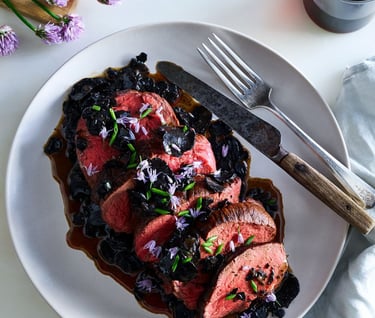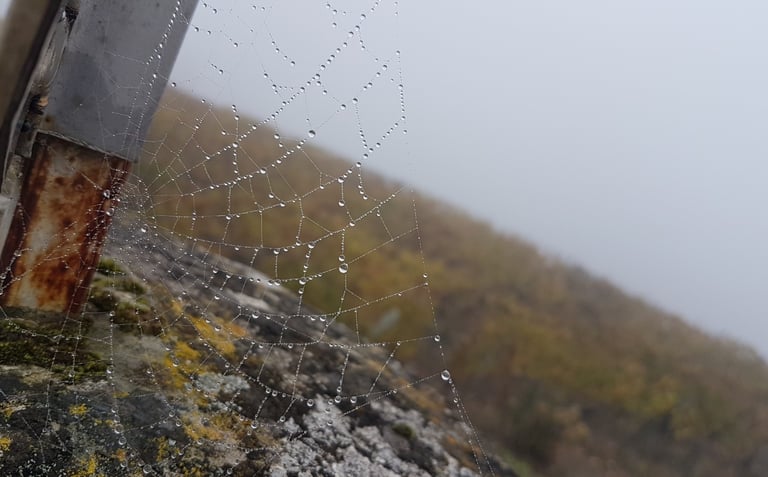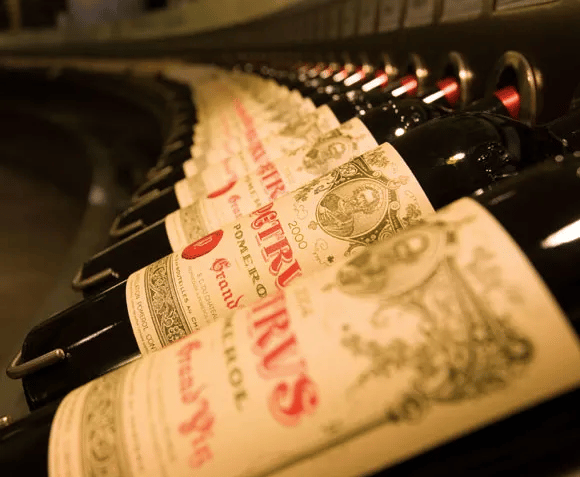
Subscribe to our newsletter
The Vertical Elevation of Petrus
A Journey Through Five Coveted Vintages
10/2/20235 min read


A Viticultural Cartography: Mastering the Terroir of Pomerol
Navigating the terroir of Pomerol is akin to traversing a complex tapestry of climatic conditions, geological structures, and human influences. The patchwork quilt of vineyards, situated to the right of the Dordogne River, unveils an intricate web of uniqueness that holds the secret to Petrus's unparalleled eminence.
Climatic Graces: The Influence of Weather
The climatic conditions in Pomerol are of quintessential maritime temperate, influenced by the Atlantic Ocean. Rainfall is abundant enough to sustain the grapevines, yet not excessive to hamper the growth. Autumns are mild and sunny, ideal for the late-ripening Merlot grapes, allowing them to achieve optimum maturity. These conditions offer a perfect equilibrium—moisture for vine nourishment, sunshine for grape maturation, and enough variance in temperature to impart complexity.
Moreover, the proximity to the Dordogne River offers a microclimate that is generally milder than its neighbouring regions. The water mass tempers the climatic extremes, acting as a thermal buffer. This ensures more consistent vintages and allows the Merlot grapes the time they require to develop full-bodied, complex flavours.




Auction Elegance: The Value of Petrus
Investing in Petrus is not for the faint-hearted. The prices for these wines at auctions often reach stratospheric levels. The 1990 vintage, for instance, can easily fetch around £4,000 per bottle, while the prized 2000 may go for even higher. These wines are not just liquid assets but historical artefacts, each telling a tale of a particular year's challenges and triumphs.
In Summary
This vertical exploration of Petrus serves as a nuanced understanding of what makes this wine one of the most coveted in the world. Whether it's the intrinsic balance of the 1995 or the forward-looking promise of the 2000, each vintage offers something unique. Each sip is not just a taste but an experience—a journey through time, geography, and unparalleled craftsmanship.
And so, as we conclude this intricate vertical series, let's raise a glass to Petrus, a wine that's as much about the past as it is about the future. A wine that's not just a beverage but a luxurious lifestyle in a bottle. Cheers to the epitome of fine wine!
Episode 1: Petrus 1990
The iconic 1990 vintage of Petrus stands out with its opulent richness and profound intensity. Hailing from Pomerol, this Merlot-driven wine showcases notes of truffle, leather, and ripe cherries. Currently, it's in a magnificent place, delivering every bit of its promise. It's best savoured within the next 2-3 years to truly appreciate its majestic peak.
Episode 2: Petrus 1995
The 1995 Petrus is elegance in a bottle. Despite a challenging vintage, this wine emerged with a balanced profile—expressing lush dark fruit aromas intertwined with hints of violets and spices. Given its evolution, it's a wine to be enjoyed now or within a few years.
Episode 3: Petrus 2000
The millennium vintage of Petrus is nothing short of spectacular. Boasting a complex nose of blackberry, plum, and touches of Asian spice, this wine's profound depth is set to evolve beautifully. An investment for the future, this bottle will reach its zenith in more than 10 years.
Episode 4: Petrus 2005
The 2005 Petrus dances between power and finesse. Its velvety texture, combined with a medley of red fruits and chocolatey undertones, makes it a sublime experience. While it's a joy now, it'll further improve with another decade in the cellar.
Episode 5: Petrus 2010
The 2010 vintage exemplifies the art of winemaking at Petrus. Reflecting the clay-rich soils of Pomerol, the wine delivers black fruit nuances along with coffee and licorice hints. For the patient connoisseur, its true splendour will unfurl if cellared for over 10 years.
The Art of Pairing Petrus
Given its complexity and depth, Petrus pairs remarkably well with equally luxurious food items. Truffle-infused dishes, premium cuts of beef, or even a classic French cassoulet would do justice to the intricate flavours of these wines.
The River’s Tale: Dordogne’s Contribution
One cannot speak of Pomerol without acknowledging the role of the Dordogne River. The river provides a form of climatic modulation, thanks to its water volume and flow. Besides, the natural drainage offered by the river's basin is another beneficial factor. During wet seasons, the river's well-established water table contributes to drawing away excess moisture, preventing waterlogged roots—a bane for quality wine production.
Soil: The Foundation of Complexity
Perhaps the most defining characteristic of Pomerol—and by extension, Petrus—is the extraordinary composition of its soil. A harmonious blend of clay, gravel, and sandy soils provides a versatile platform for viticulture. However, Petrus is particularly privileged with a rare blue clay soil, existing in just about 20 hectares of Pomerol. This blue clay has a remarkable ability to regulate water supply to the vines. During dry spells, the clay retains moisture, releasing it to the vines, and during wet periods, it provides excellent drainage. This equanimity ensures the vines are neither stressed nor too comfortable—leading to the grapes' balanced, nuanced characteristics.
The gravel in the soil aids drainage and retains heat, which is crucial for the grapes' ripening. Meanwhile, the sand offers breathability and texture. This triad of soil elements colludes to form a terroir that is nigh on perfect for Merlot—a grape variety that thrives in complex, well-drained yet moisture-retentive soils.
Human Element: The Vigneron’s Craft
Although climate and soil lay the foundational platform, the vignerons (winegrowers) are the conductors of this orchestral terroir. The hand-harvesting of grapes, the meticulous selection process, and the age-old but continually refined techniques contribute significantly to Petrus's legend. The gentle slope of the vineyards allows for natural drainage, and the vignerons ensure that the vines are pruned and trellised to optimise sun exposure, thereby mastering the terroir they are blessed with.
In conclusion, the terroir of Pomerol isn’t merely a piece of land but a dynamic entity—a symbiotic relationship between soil, climate, the river, and human craftsmanship. This deep understanding of Pomerol's viticultural landscape is crucial for anyone who wishes to comprehend the luxurious enigma that is Petrus.
The Legacy of Petrus: A Brief Overview
Petrus has long been considered the epitome of luxurious wine, embodying the utmost expression of the Pomerol terroir. The estate has somewhat of a cult status, not just because of its exorbitant price tag, but due to its ability to produce wines of unparalleled complexity and finesse. Let's not forget the historical narrative—Petrus started as a humble 6.4-hectare vineyard and has evolved into an iconic symbol of opulence and grandeur.
